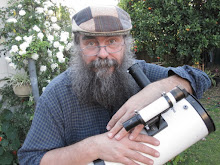Tuesday, February 25, 2025
Thursday February 27 to Thursday March 6
The New Moon is Friday February 28. Venus is becoming harder to see low in the twilight, and is close to the thin crescent Moon on the 2nd. Jupiter and Mars are visible in the evening sky. Jupiter is past opposition and is visible all evening long. The Moon is close to Jupiter on the 6th. Mars is high in the early evening sky.
The New Moon is Friday February 28. The moon is at apogee, when it is furthest from the Earth, on the 2nd of March.
Venus is visible in the early twilight. You will need a clear, level horizon to see Venus. Venus is a thin crescent in telescopes.
The inset is the telescopic view of Venus at this time.
Similar views will be seen from the rest of Australia at roughly the equivalent local time (90 minutes after sunset).
Similar views will be seen from the rest of Australia at roughly the equivalent local time (90 minutes after sunset).
Elsewhere in Australia will see a similar view at the equivalent time (90 minutes after sunset).
Mercury is lost in the evening twilight.
Venus is lowering in the evening twilight and is becoming more difficult to see.
Mars is high in the evening sky. Mars was at opposition, when it is biggest and brightest as seen from Earth, on January the 16th.
Jupiter is high in the the north-western evening sky when the sky is fully dark.
Saturn is lost in the twilight.
Star Map via Virtual sky. Use your mouse to scroll around and press 8 when your pointer is in the map to set to the current time.
Cloud cover predictions can be found at SkippySky.
Here is the near-real time satellite view of the clouds (day and night) http://satview.bom.gov.au/
Labels: weekly sky







 Click to read about or order
Click to read about or order Click to read about or order
Click to read about or order Click to read about or order
Click to read about or order Click to read about or order
Click to read about or order




